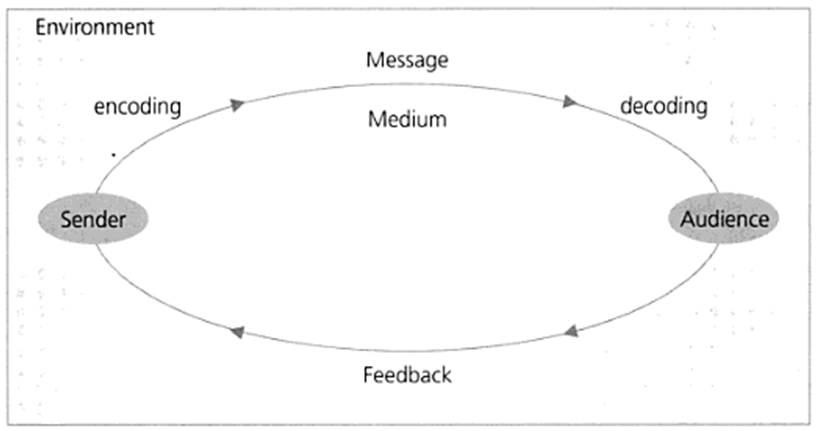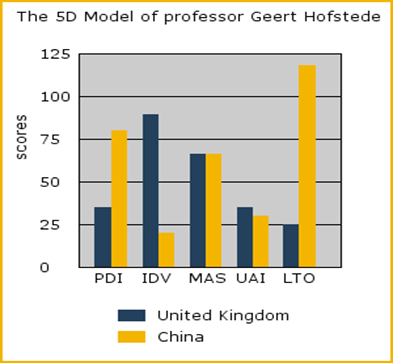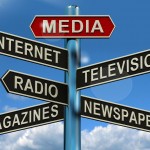
The model of interpersonal communication assists in comprehending elements and interactions relevant to the communication process. Communication models can be linear or cyclical. The Model of Interpersonal Communication illustrated below acknowledges communication as a continuous process and appreciates the impact of each element on the overall outcome of communication. Source: Cleary (2008) Sender In the process of communication the sender is an individual that initiates the communication in the first place. Also, specified as source, encoder or communicator, the sender has the primary responsibility of the contents of the message. Medium Medium in a communication process can be explained as a form in which the message is transmitted by a sender to a receiver. Medium can be divided into two categories: written and spoken. Written medium include book, letter, e-mail, fax, memo and any other written format, whereas spoken mediums include but not limited to lectures, presentations, interviews, telephone conversations and others. The choice of medium in communication depends on a wide range of factors that include the duration of time available, the level of importance of the message, geographical distance between sender and receiver, and cost considerations. Audience Receiver, also referred to as an audience is the individual to whom the message is directed by the sender. Communication outcome depends on the ability of the receiver to understand the message. The manner in which receiver comprehends the message depends on individual life experiences and cultural background. Decoding Decoding comprises the process of receiving, interpreting and comprehending the message by receiver. A range of factors impacting this stage of the communication process include the type of message, the quality of the use of language by the sender, possible emotional barriers and others. Feedback Feedback can be explained as the response of the receiver to the…

A literature review can be explained as “account of what has been published on a topic by accredited scholars and researchers” (Herbst and Coldwell, 2004, p.31). Literature review conducted as a part of an academic research must meet the following basic requirements: 1. Literature review must be directly related to project questions and objectives. 2. Literature review must contain of synthesis of results into summary about what is known and not known about the project area. 3. Literature review must identify and discuss the areas of controversy in the literature. 4. Literature review must be instrumental in identifying areas for further research. References Herbst, F. & Coldwell, D. (2004) Business Research, Juta and Co Ltd
By John Dudovskiy
Category: Literature Review

The origin of the term of ‘communication’ is linked to the Latin word of ‘communis’ that means common. There are many definitions of communication. One of the most comprehensive definitions of communication can be proposed as “the process of creating meaning between two or more people through the expression and interpretation of messages” (Cleary, 2008, p.xii). In simple terms, communication can be defined as a process in which a message is encoded by a sender and passed to receiver through certain channels, or order for the message to be decoded. Adppted from: Anthony Wanis-St.John’s “Communication and Negotiation” References Cleary, S. (2008) “Communication: A Hands-on Approach” Juta

Employee morale is “a composite of feelings and attitudes that individuals and groups have toward their work, working condition, supervisors, top level management, and the organisations” (Leonard, 2012, p.375), whereas motivation can be defined as “the process that determines the reinforcement value of an outcome” (Kalat, 2010, p.375). Strategies offered to Managing Director in terms of repairing employee morale and boosting motivation include determining the types of employee motivation, applying to the most immediate needs of employees, adopting an individualistic approach in employee motivation, using an effective combination of tangible and intangible motivational tools, and achieving equity in motivation. The rationale behind each of these strategies is discussed below in greater details. 1. Determining the Types of Employee Needs It is important to determine types of employee need in order to repair employee morale and boost the level of motivation at Company. McClelland’s Achievement Motivation (1965) can be used to deal with this task. McClelland (1965) divides employee needs into three groups: need for achievement, need for power, and need for affiliation. It has to be noted that all three types of needs – need for achievement, need for power, and need for affiliation can be possessed by any one individual; nevertheless, specific type of need generally prevails over others for each individual. Accordingly, managers need to engage in employee motivation taking into account their specific needs. For example, employees that have need for power can be effectively motivated by positions with greater level of responsibility. Motivation of employees with a greater need for affiliation, on the other hand, can be achieved through publicly acknowledging their contribution to the achievement of organisational goals in front of groups in general, and their immediate team members in particular. 2. Applying to the Most Immediate Needs of Employees Maslow’s Hierarchy of…

Systematic literature review can be defined as “a review with a clear stated purpose, a question, a defined search approach, stating inclusion and exclusion criteria, producing a qualitative appraisal of articles” (Jesson et al., 2011, p.12). References Jesson, J., Matheson, L. & Lacey, F.M. (2011) “Doing Your Literature Review: Traditional and Systematic Techniques” SAGE Publications
By John Dudovskiy
Category: Literature Review

Literature review can be divided into two categories: exemplary and exhaustive. It has been noted that “in the exemplary review, the writer assumes the reader knows about the subject and so presents only key references to reacquaint the reader with representative work that relate to the research study” (Rubin et al, 2009, p.236). An exhaustive literature review, on the other hand, is considered to be comprehensive with the author researching and presenting all the information related to the research area. References Rubin, R.B., Rubin, A.M., Haridakis, P.M. & Piele, L.J. (2009) “Communication Research: Strategies and Sources” Cengage Learning
By John Dudovskiy
Category: Literature Review

According to Hofstede’s model for cultural differences and analysis between China and UK, the following table has been produced in reference to the link provided. Adopted from: http://www.geert-hofstede.com/hofstede_dimensions.php?culture1=94&culture2=18#compare According to power distance index, the Chinese understanding of power distribution and inequality is more than two times higher than the UK expectations. This indicates that the Chinese team management style is inclined to one person in the organization to have higher power than others and that person is perceived to be in a higher position than others. And according to individualism aspect of the above table, theUKorganization culture tends to have more individualistic approach than that ofChina. This indicates that individualism is more developed inUKcompanies and team management than Chinese. The reaction to risk in both countries tends to be in a very similar level. However, in terms of planning, the UK culture indicates to have short term planning, whereas, the Chinese to be long term planning. Based on above analysis, it can be concluded that the following type of management would be most appropriate to operate the business unit effectively in China: The management style similar to autocratic, where management tends to have more power to run the company as collectivism is highly appreciated in Chinese organizations. This indicates that subordinates are happy to follow the leader. In terms of planning skills of management, a manager with long term planning goals should be most appropriate here as Chinese management and employees tend to think well into future. Gender does not make big difference as both countries tend to have same levels of approach to genders, according to table above. Therefore, a person who can work collectively with others, more challenging towards others and risk aware would be ideal for the manager position here. The person suitable for this position…

It has been argued by Saad (2012) that there are no vast differences between highly developed and developing countries in terms of criticism associated with the nature of representation of women in media advertisings. However, the levels of frequency and intensity associated with these criticisms differ across counties depending on a range of factors such as religion, values, cultural specifications etc. Generally, criticism associated with the nature of representation of women in media advertisements can be divided into the following three categories (Cortese, 2007, Abel et al., 2010, Biermann, 2011): Women being represented as less capable and less intelligent than men Women being represented as servants to men Women being represented as objects for sexual satisfaction The role of religion on the nature of representation of women in media advertisements has been stressed by Ross and Byerly (2008). Specifically, it has been claimed by Ross and Byerly (2008) that in some religions such as Islam and Judaism indication to female intimate issues in public manner is strictly forbidden, and this would have direct implications on the nature of representation of women in media advertisements in relevant societies. Frith and Mueller (2010) mention a large-scale gender-role stereotyping study conducted by Furnham and Mak (1999) that involved data collection from America, Australia, Denmark, France, UK, Hong Kong, Indonesia, Italy, Kenya, Mexico and Portugal. This specific study has found that across a wide range of cultural settings in advertisements women are most often pictures within home settings, whereas men are pictured in advertisements in diverse settings. Moreover, findings of the same study indicate that the images of women are mainly used to advertise home utilities and products, while images of men are used to advertise products and services that are distant from home. References Biermann, G. (2011) “Stereotypes Galore! Women’s Emancipation as…

The role of women in media advertising has been discussed by many authors from various angles. According to Ross and Byerly (2008) traditionally media advertisements have positioned women as passive and submissive. At the same time, Ross and Byerly (2008) state that this prescribed role for women in media is being changed at the moment, however certain limitations still exist. Cheng and Chang (2009) relate to the role of women in media advertising to sex appeal. Moreover, Cheng and Chang (2009) argue that this situation is not likely to change for a foreseeable future and authors attempt to justify this viewpoint by referring the basic human nature. Accoring to Abel et al. (2010) the integration of female body images in advertisement in various forms has increased significantly during the last two decades. It has been noted that women in advertisements are represented thinner and well below their average weight. Mogel (2010) addresses the issues of media stereotyping in relation to woman. Specifically, according to Mogel (2010) media stereotyping perceives the role of women as intimate objects with submissive characters. Biermann (2011) addresses the same issue and argues that the role of women in many parts of the world is stereotyped by the media as housewives with the main concerns for house cleaning. According to Saad (2012) the significance of the nature of female representation in TV and radios are greater compared to the print media. Saad (2012) explains his stand in a way that while TV media and radio force their advertising on their viewers, in print media generally advertisement are less interruptive, in a way that people can skip them if they want to do so. McAllister and West (2013), on the other hand, relate the reasons of images of women being used more frequently than images of men…

Media can be defined as “communication channels through which news, entertainment, education, data, or promotional messages are disseminated” (Business Dictionary, 2013). Katz (2012) divides media into two categories: lean forward and lean back. The following table illustrates the major differences between lean forward and lean back media. Lean forward Lean back Magazines Newspapers Direct Main Yellow Pages Television (via DVRs, Video on Demand) Internet Television (other) Radio Outdoor The main differences between lean forward and lean back media Source: Katz (2010) In simple terms, lean forward media is a type of media where receivers lean forward to interact and control the flow of information in an active manner. In lean back form of media, on the other hand, viewers can lean back and do receive the information in a passive manner. According to categorisations provided above print media can be specified as lean forward media. References Katz, H. (2010) “The Media Handbook: A Complete Guide to Advertising Media Selection, Planning, Research, and Buying” 4th edition, Taylor & Francis Media (2013) Business Dictionary, Available at: http://www.businessdictionary.com/definition/media.html
